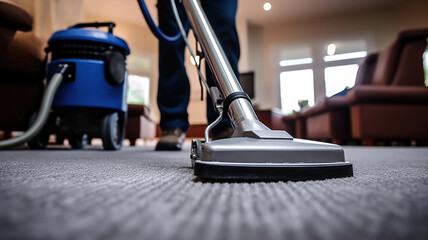Digital Marketing is an umbrella term for all the ways businesses can use data to connect with audiences and improve customer engagement. It includes everything from always-on communications to campaign messaging, and it’s essential for companies that want to grow and meet ever-changing customer needs.
Social media marketing is one of the best ways to promote a business and drive sales. It can be a bit of a time-consuming process and requires an investment in tools, but it can also be an effective way to reach new customers and increase brand awareness.
Companies should focus on creating content that is engaging and shareable. This can include videos, images or text. Visual content tends to perform better than text alone. However, a company should make sure it knows its audience well. For example, if its target audience is primarily male, it should focus on content that appeals to this demographic.
It is important for marketers to understand their competitors’ social media strategies. This can be done through third-party tools or by analyzing competitor data through Google Analytics. Marketing teams should also ensure that all departments and senior stakeholders are aligned with the social media strategy. This can help to avoid confusion and miscommunication.
Search Engine Optimization (SEO)
Search engines are a key part of digital marketing, and optimizing your content for search is one of the most important things you can do. SEO aligns your website and other digital assets with the criteria and ranking factors that search engines use to determine the order of results in non-paid search engine results pages (SERPs).
Search engine optimization can take many forms, from keyword research to creating links and enhancing page structure. It also involves understanding your audience and using keywords that resonate with them, as well as evaluating your competition.
The main benefit of effective SEO is higher rankings in SERPs, which leads to more organic traffic. However, increasing traffic is only one part of growing your business; you need to convert that traffic into paying customers. That’s where CRO comes in. A quarter of all clicks go to the first organic result, so ranking in the top spot is critical.
Content Marketing
Content marketing is the process of creating and distributing content to attract customers, increase engagement and drive conversions. This can be done through blog posts, podcasts, infographics, videos and other forms of digital media. It can also be used to promote other marketing campaigns, such as pay-per-click (PPC) ads and search engine optimization.
In order to create compelling content, marketers must understand their audience. This can be done by creating buyer personas and identifying the problems and questions they need to be answered.
In order to grab the attention of a potential customer, content should be timely and engaging. This can be done by using relevant keywords in your headlines and adding them to your website URL, as well as creating social media posts that are relevant to current events or popular culture. For example, Hootsuite recently created a branded video titled Social Thrones that tapped into the popularity of the show and received over 1.3 million views.
Email Marketing
Email marketing is the process of sending commercial messages to a group of individuals who have agreed to receive your emails. It’s a cost-effective digital marketing strategy that can be used to nurture relationships, generate sales leads and build customer loyalty.
It’s important to keep in mind that emails should be designed for mobile devices. This means that your subject lines, text size and button sizes should be optimized for mobile viewing. Emails that aren’t mobile-friendly can lead to high bounce rates, unsubscribes and spam complaints.
The best email marketers use personalization to make their communications feel more relevant. They speak to their subscribers like they would a friend, which creates a sense of trust and builds relationships. They also use email automation to streamline list management and send more targeted, effective content. Emails that are personalized and automated can increase open rates, click-through rates and conversions. They can also help you grow your business and generate more revenue.
Personalized Messaging
Personalized messaging involves targeting specific audience segments with content that aligns with their interests and needs. This type of messaging can help to increase brand loyalty, drive conversions, and build customer relationships.
Personalization can be used across multiple marketing channels, from email to social media and more. However, it can be difficult to balance the right level of personalization with relevancy. This can make your messaging feel invasive or creepy, which can negatively impact the user experience and cause them to disengage with the brand.
One way to increase the relevancy of your personalized messages is by using first-party data, such as purchase or browsing history. Another way is by serving personalized ads on social media to specific audiences, such as people who have visited your ecommerce site but didn’t make a purchase. This can help to re-engage these users and encourage them to return to your site to complete their purchase.
Chatbots
Chatbots can answer FAQs and help customers find what they’re looking for. They can even complete transactions without the customer having to leave the conversation, saving time and energy for your business.
A well-designed chatbot can provide personalized customer service and increase brand loyalty. The more information a bot gets, the better it can understand customers’ needs and preferences. This can help businesses target the right messages to the right people at the right time, increasing conversions and overall sales.
To get the most out of your chatbot, ask your team what common questions they receive from customers or prospects. Then, create a list of questions to cover and build out chatbot content accordingly. Also, make sure to give your chatbot a personality by giving it a name and using emojis that align with your industry. For example, Sheetz uses a fun and playful tone with their chatbot to drive engagement and build customer satisfaction.
Augmented Reality (AR)
AR is the use of digital technology to overlay virtual information or sensations into a physical environment. It can be used to improve navigation, provide educational material or even transform a user’s face. While it is not quite as immersive as virtual reality (VR), AR can be used to create unique and engaging experiences for both consumers and businesses.
Pokemon GO and Google Street View are some of the best known examples of AR. However, the technology has a much wider range of applications. For example, professional sports teams have incorporated AR to help their players practice. One example was an augmented reality app that piped in crowd noise to simulate the atmosphere of a game.
There are two main types of AR: marker-based and markerless. Markerless AR uses cameras, GPS and accelerometer data to map the user’s location and display relevant information. It can also be used to simulate objects in a room, like Ikea’s mobile app that lets users “try out” furniture.
Long-form Content
Long-form content is a form of digital marketing that includes articles, white papers, e-books and guides. It can help to increase website traffic and drive conversions.
It can also be used to improve SEO. Google rewards sites that publish comprehensive content with more words by ranking them higher in search results. Additionally, longer articles encourage readers to spend more time on your site, which helps to reduce your bounce rate.
However, it’s important to consider your audience when using long-form content. Some users prefer short-form content that provides a quick answer to their questions rather than a detailed guide. Additionally, shorter content may be preferred by users on mobile devices with shorter attention spans. To maximize the benefits of long-form content, make sure that your content is targeted to specific users and addresses their concerns. This will help you to build a strong reputation and increase your website’s organic traffic. Alternatively, consider incorporating longer-form content into other digital marketing initiatives such as video and webinars.
Progressive Web Pages
When your brand is competing on experience and not just price, progressive web apps (PWAs) are a powerful option. They offer the speed and functionality of native apps without the development cost, platform irregularities, app store approvals and updates, and download requirements.
PWAs load instantly, are always available to your shoppers, work offline, and provide push notifications. They’re also super lightweight and run seamlessly even on low-bandwidth networks. Tinder and Pinterest, for example, switched to PWAs and saw a 50% increase in their mobile conversion rates.
Unlike the stripped-down AMP pages that are limited in features, PWAs can be powered by HTML, CSS and JavaScript. This makes them searchable in browsers and allows for deeper integration with a shopper’s device, including features like location tracking and accelerated loading speeds. BMW, for instance, created a PWA that replicated the smooth, fast user experience its customers associate with their vehicles. The site now loads four times faster and has a higher user retention rate than their native app.











